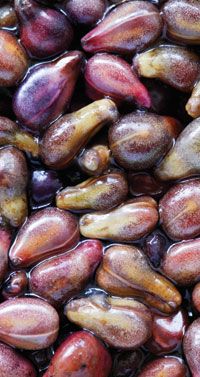CPC Ingredients - The Beauty of Botanicals
Originally Published
Originally Published NO January/February 2010

Collagen is a major skin protein that diminishes with aging, excess ultraviolet (UV) exposure, poor nutrition, and smoking. The loss of collagen results in wrinkled, thin, sagging skin-telltale signs of old age.
Healthy skin, on the other hand, is characterized by density, thickness, hydration, uniform pigmentation, and elasticity. Collagen, the extracellular structural protein most plentiful in skin, is the most important skin component in determining most of those qualities. As an extracellular protein, collagen is formed by special cells known as fibroblasts (populating the dermis just below the epidermis), woven into resilient bundles that are arranged in parallel, crosslinking fashion to form a tough but elastic sheath or layer.
A growing body of evidence suggests that healthier collagen levels may be achieved through bioactive extracts from botanicals and other nutrients such as vitamins A and C. Bioactive substances can increase collagen synthesis or help to reduce collagen destruction by inhibiting the enzyme collagenase. The first effect, increasing collagen synthesis, can usually be achieved by topical application of specific bioactives.
Collagenase inhibition can be accomplished both topically and through ingesting bioactives. Many polyphenol compounds derived from a wide variety of botanical sources have collagenase-inhibiting effects.
Most notable and well-researched are the proanthocyanidins from grape seed extract, which are effective in the dual role of promoting collagen synthesis and preventing degradation from collagenase. Additional effects have been described as strengthening and stabilizing the collagen fibers by interposing the procyanidin molecule within the collagen molecular framework, and additionally improving elasticity properties (Maffei 1994, Han 2005, Shi 2003).
Other bioactive botanical fractions can also increase collagen biosynthesis:
- Studies have shown that persimmon leaf extract increased the rate of collagen synthesis in human skin by 25% at a low concentration of 1 to 10 parts per million (An 2005).
- Purified polysaccharides derived from kiwi fruits were found to stimulate cell proliferation of keratinocytes and fibroblasts (collagen-producing cells). This resulted in doubling collagen synthesis in the fibroblasts compared with regular activity. The polysaccharide concentration was only 0.13 mg/ml (Deters 2005).
- An extract from pomegranate peel compounded as a 5.0% gel for wound healing resulted in a doubling of collagen synthesis measured by hydroxyproline content (Murthy 2004).
- Extracts of gotu kola leaf containing triterpenes and asiaticoside, and extracts of lycii berry containing polysaccharides, were shown to have collagen-stimulating effects when used topically (Zhao 2005).
- Extracts of the bark of the gutta-percha (Hardy Rubber tree), Eucommia ulmoides, that contain iridoid compounds aucubin and geniposidic acid were also found to increase collagen synthesis when given orally instead of topically in pharmacological experiments (Li 1998).
Brien Quirk is director of research and development for ingredients supplier Draco Natural Products (San Jose, CA).
For article references, visit www.NutritionalOutlook.com/1001/botanicals

